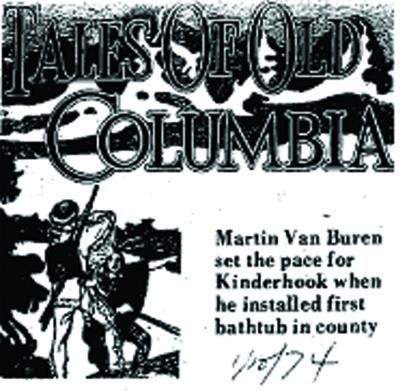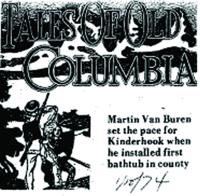From Jan. 10, 1974
When, in 1841, Martin Van Buren bought the old Van Ness place in Kinderhook, and began enlarging and improving it, his neighbors watched him with tolerant grins.
He might, for four years, have been President of the United States, and held a very exhalted dignity, but to them he was still Matty Van Buren, the Boy Lawyer, whom they had known all his life. They were in no way awed by him or the changes he was making in the house.
Most of them, in fact, were happy that he had bought it. He was, they admitted, improving the place at no end, and it was right that the ex-president live in a better house than ordinary men. Aside from this, Van Buren was simple and neighborly, and they liked him very much and were glad to see him have a real home at last.
Actually, of course, some of the changes he made were monstrous. He covered the lines of the house with towers, balconies and bric-a-brac so popular at the time. There was no protest from Kinderhook. The residents as well as the ex-president thought the new style of architecture was quite beautiful. They watched and smiled.
Then a story spread around the village. At first it was met with disbelief and then disapproval. This time the Kinderhookers decided that Matty had gone too far.
He was actually installing a bathtub in Lindenwald!
It was unheard of, ridiculous. No one in Columbia County and there were many people who had more money than Martin Van Buren — had a bath tub. It was a silly pretention and they added, shaking their heads, he’d be sorry if he started using the contraption. Everyone knew they were most unhealthful.
Bathing of course, was not unknown or unheard of in Kinderhook. The people there had learned in school that Romans had bathed; they had also learned that this was one of the downfalls of the Roman Empire. It had made the people soft and decadent. Queen Elizabeth had ordered a bat tub made for herself and then used it once a month, whether she needed it or not, but then she was eccentric anyway.
That Martin Van Buren of Kinderhook, should be following the examples of such people was almost beyond belief. Some, who were personal friends and were fond of the ex-President, were amazed. They consulted doctors and shook their heads.
Baths, the physicians said, were not only unnecessary, but dangerous. Bathing removed perspiration which regulated the body’s temperature. It took away the outermost layers of skin and left behind the more tender skin unprotected. In winter, they said, it could be fatal.
Warm weather increased the circulation of the skin and when a bather went outside, this blood near the surface became cold and stiffened producing stiffness and often bronchitis or pneumonia.
They argued that it was silly to bathe just to keep clean.
Everyone knew that the old skin peeled off anyway and that this kept a person clean.
Van Buren’s friends repeated this to him but Matty only laughed and said he’s been bathing for years, and it hadn’t hurt him. Asked in a shocked voice if he bathed every day, the ex-President said, “Yes.”
For a long time, the Van Buren neighbors watched Martin closely. He seemed to be exuberantly healthful.
Then a few other families, not be left behind in the fashion parade, had tubs installed in their homes. They used them, too. Probably with trepidation at first, gradually with more assurance and delight. Parents began to dunk the children daily and found they stayed in better health for it. The old bug-a-boo was worn out.
Within half a century even small houses were build with tubs. They had become as necessary as doors, windows and outhouses.









